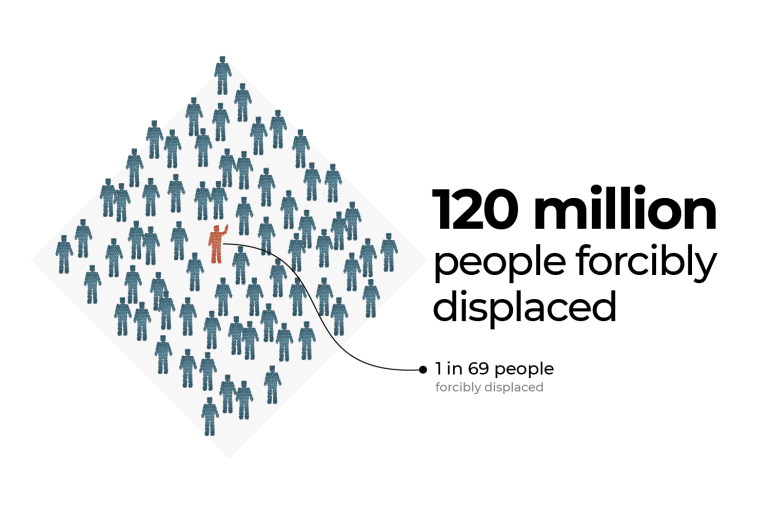A report by the United Nations High Commissioner for Refugees (UNHCR) reveals that approximately 117.3 million people, equating to one in 69 individuals globally, are forcibly displaced. This figure is expected to surpass 120 million by April 2024, with forced displacement attributed to conflicts, violence, persecution, and human rights violations.
Of the forcibly displaced population, 68.3 million are internally displaced within their own countries due to conflict or crises. The number of refugees crossing international borders reached 43.4 million in 2023, driven by displacement in Sudan, ongoing conflicts in Ukraine, and other regions. Additionally, the number of asylum seekers awaiting decisions rose by 26 percent from the previous year, totaling 6.9 million.
The refugee crisis has deep historical roots, with the UN Refugee Convention established in 1951 to protect the rights of refugees primarily in Europe post-World War II. Over the decades, the number of refugees has steadily increased due to various conflicts worldwide. Recent examples include the war in Ukraine, which saw 5.7 million people fleeing within a year, and conflicts in Sudan and Syria, contributing to the displacement crisis.
Notably, the majority of refugees originate from a few countries, including Afghanistan, Syria, Venezuela, Ukraine, and Palestine. These individuals often seek refuge in neighbouring countries, with Iran, Turkey, Colombia, Germany, and Pakistan hosting significant refugee populations. However, the humanitarian situation remains dire, particularly in conflict-affected areas such as Gaza, where millions face food insecurity and the threat of famine.
